Your songthaew from Ayutthaya rolls in to the small Thai town of Ang Thong. It is unremarkable in almost every respect. The normal shops and buildings that would be in any other city on the central plains of Thailand line its streets. Negotiating with a motorbike taxi driver you agree to a fare that you are both happy with and suddenly you are hairing along the Ang Thong – Suphanburi road. After about ten minutes of helmet-free hair-raising weaving through cars and trucks, your destination appears in spectacular fashion. As you approach the temple on the dusty highway a golden Buddha looks out at you. The closer you get, the enormity of the statue becomes more and more apparent. It is simply massive. The Thais call it the ‘Big Buddha’, but the adjective is not even remotely sufficient to describe how big it really is. The huge statue is not the only thing that is out of the ordinary in this temple that is somehow located in the middle of nowhere in the Thai countryside. Suddenly, your driver veers off the main road at speed onto a packed dry earth driveway with the casual abandon of a seasoned pro. Hanging on to the back of the bike, the pleasing idea that you don’t have to be on this machine much longer keeps you grounded. You roll into the car park and before you can count your blessings, you are confronted with a giant lotus that, along with everything else at Wat Muang (the purple temple), comes straight out of Gulliver’s Travels.
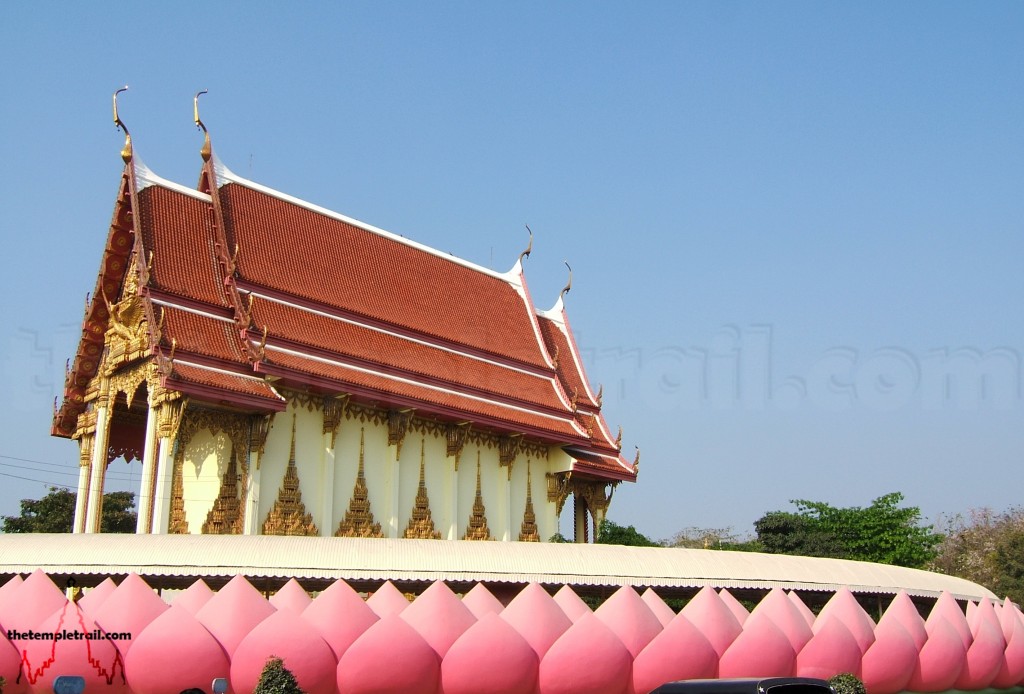
Inside the Brobdignagian flower is the exquisite golden Ubosot (ordination hall) of the temple. The highly original construction shirks most of what we know about traditional temple building. The whimsical design is wonderful. The golden Ubosot sits cradled by the gigantic flower pedestal that boasts the largest lotus petals in the world. The building is locked up and only used on special occasions, but the exterior is the real treat and walking around it, you can’t help but be filled with a childlike wonder. Circling to the right, your walk takes you past a Chinese shrine to Guanyin, the bodhisattva of compassionate mercy. It is more intricate than most shrines in China and between the columns that are spiralled with dragons, the thousand-armed golden statue looks out upon you. The building is much taller than it is deep and the smoke of incense chokes your senses as try to focus on the serene visage of the statue. Your amble next brings you to a striking shimmering building. It is shaped almost as a mondop (shrine building) and has a spired roof, yet it has sema stones marking its boundaries. This is the second Ubosot (it is very unusual for a temple to have more than one) and it is coated in silver tiles that sparkle in the sunlight.

Passing into the hall through the main doors brings you into a breathtaking chamber. It is tiled with mirrors and it gives you the impression that it goes on for infinity. The room feels as if there are no boundaries. It makes you ponder the enormity of the universe and your tiny insignificance within it. It challenges your perceptions of reality and makes you question your preconceptions. The hall is filled with statues of Buddha and other beings, but the most significant relic here is the body of Ajarn Kasem. Ajarn Kasem was an abbot of Wat Muang and he died when he was relatively young. The miraculous thing is that his body does not decay. He is venerated by devotees who pray to his corpse for protection, healing and luck. The Ubosot invokes the timeless nature of his body with its endless walls and ceiling of mirrors.
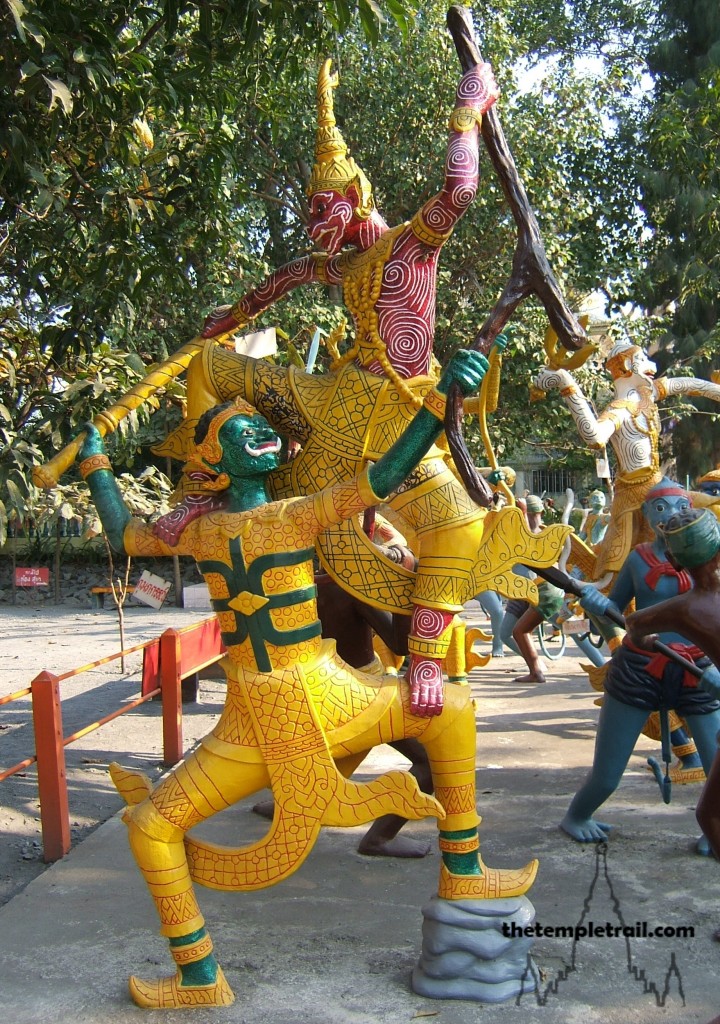
Leaving the amazing silver Ubosot, you pass colourful statues of ruesi (rishis or hermits ascetics) and important characters from Asian religious stories and writing. The pilgrims from Journey to the West cut a jolly dash through the scenery that becomes increasingly violent as you continue. First you are greeted by scenes from the Ramakien (the Thai version of the Indian epic Ramayana). Monkeys and demons fight each other as Phra Ram (Rama), with the help of Hanuman (the monkey god-king) rescues his wife Nang Sida (Sita) from the demon king Thotsakan (Ravana). Next are some more martial tableaux, as you view the Burma-Siam wars through Thai eyes. The Burmese are depicted roasting babies and the Siamese as heroic and guileful warriors.
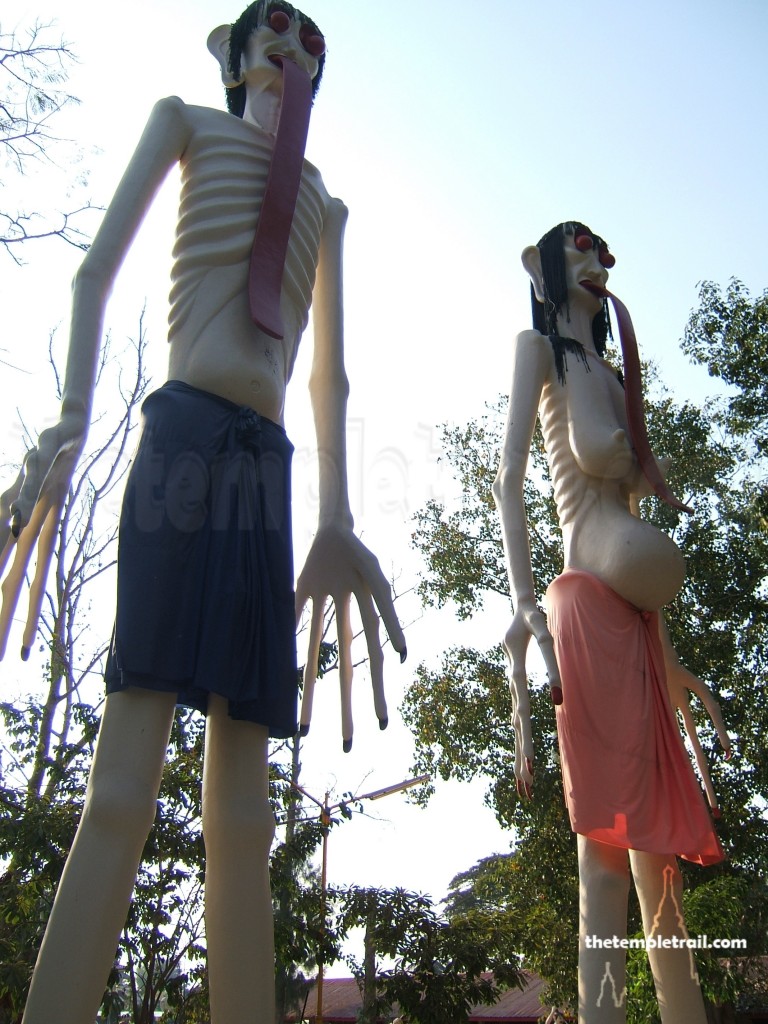
All of these depictions prepare you for the hell garden. It is one of the most gruesome sights you will see in a religious place. Full sized statues of hell torturers punish the wicked in bloody detail. Murderers are hacked open, thieves are sawn in half, alcoholics drink molten metal and naked adulterers climb a spiked tree. Two towering hungry ghosts look out upon the proceedings with their swollen tongues lolling out to their distended stomachs. Having filled your eyes with what awaits you if you are wicked, you pass on to something serene and uplifting.
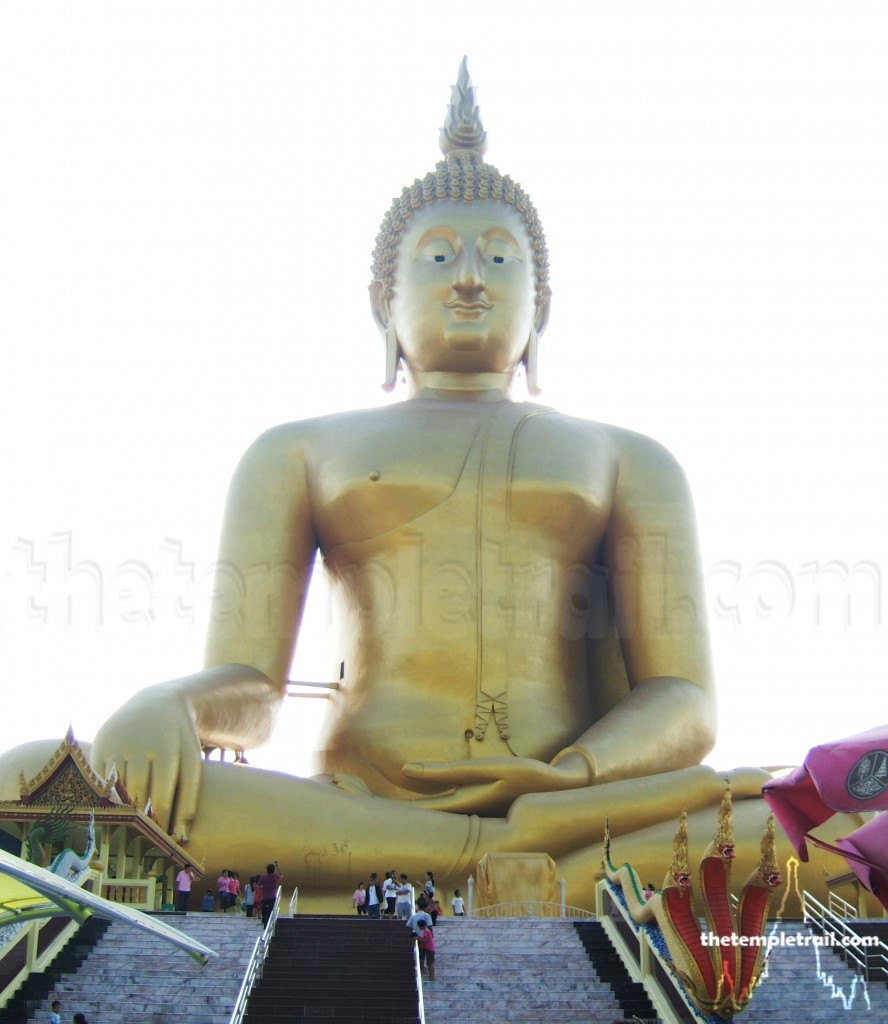
The garden walk takes you to the foot of a set of stairs guarded by nagas. At the top of the steps is the 92 metre tall and 63 metre wide golden Phra Buddha Maha Nawamin. It is the biggest Buddha statue in Thailand and took 18 years to build. The massive statue gazes out over the temple and the paddy fields that surround it. It dominates the landscape. As you climb the stairs, you realize how tiny you are in comparison to the statue with each step. Your ego melts as you reach the platform on which the statue sits. It sits in the defeating Mara pose and the hand that reaches down to the ground is the focal point for worshippers who reach up to touch the tip of his middle finger from a wooden platform. It is one of the most amazing pieces of votive statuary in the world and it is like a mountain rising out of the endless flatness of the central plains.
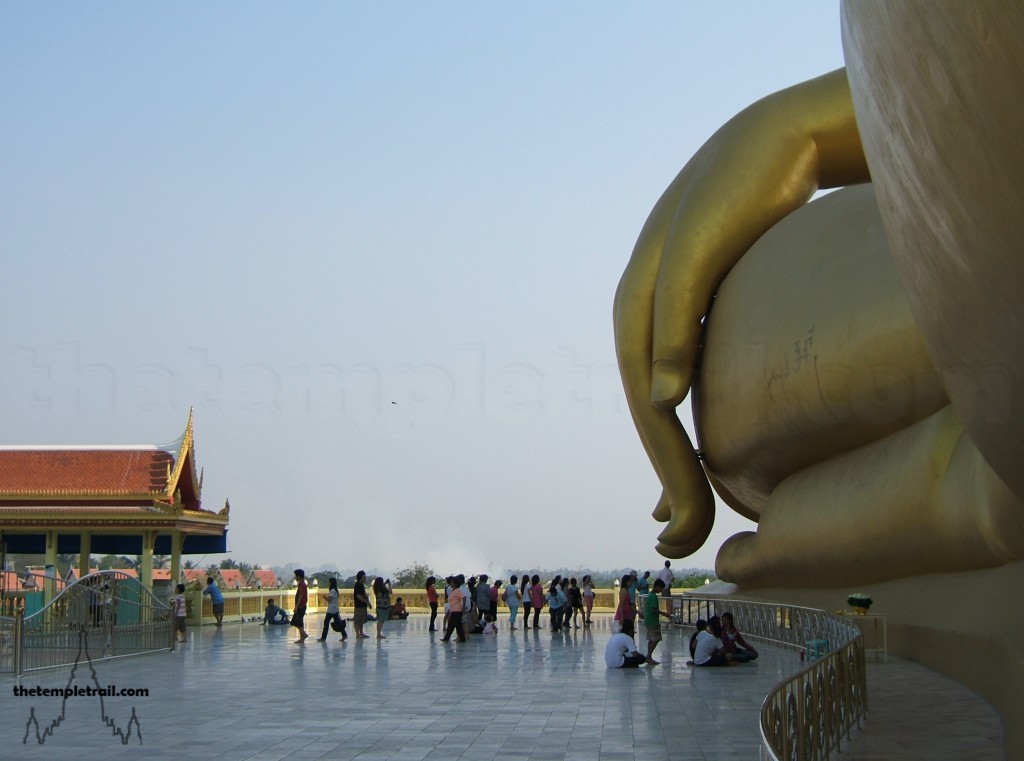
Making your way back to the front of the temple, the calm that has descended on you gives way to anxiety, as you know that you will have to sit on the back of the motorbike once more. Braced for your journey you hail your driver who flashes you a grin as he flicks his cigarette away and pats the seat of the bike invitingly. Somehow, as you tear out of the temple car park, you are less concerned than on the way here. The temple has had the effect of putting you in your place. Heading back to Ang Thong along the highway, the statue watches you leave. There is nowhere else like Wat Muang. It is a conundrum and one of the most unique temple complexes in the world; a bizarre riddle that fascinates, terrifies, awes and mystifies.
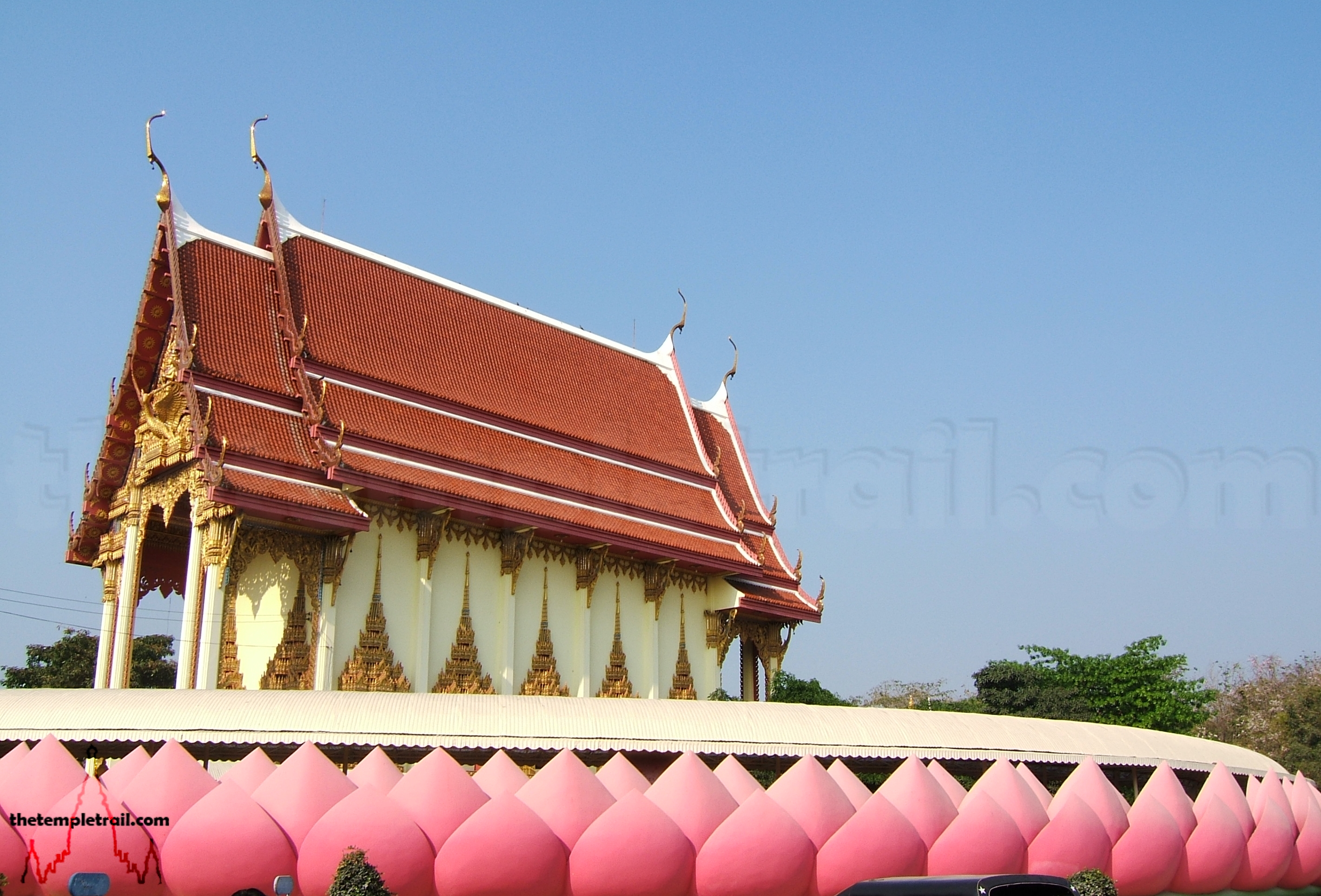
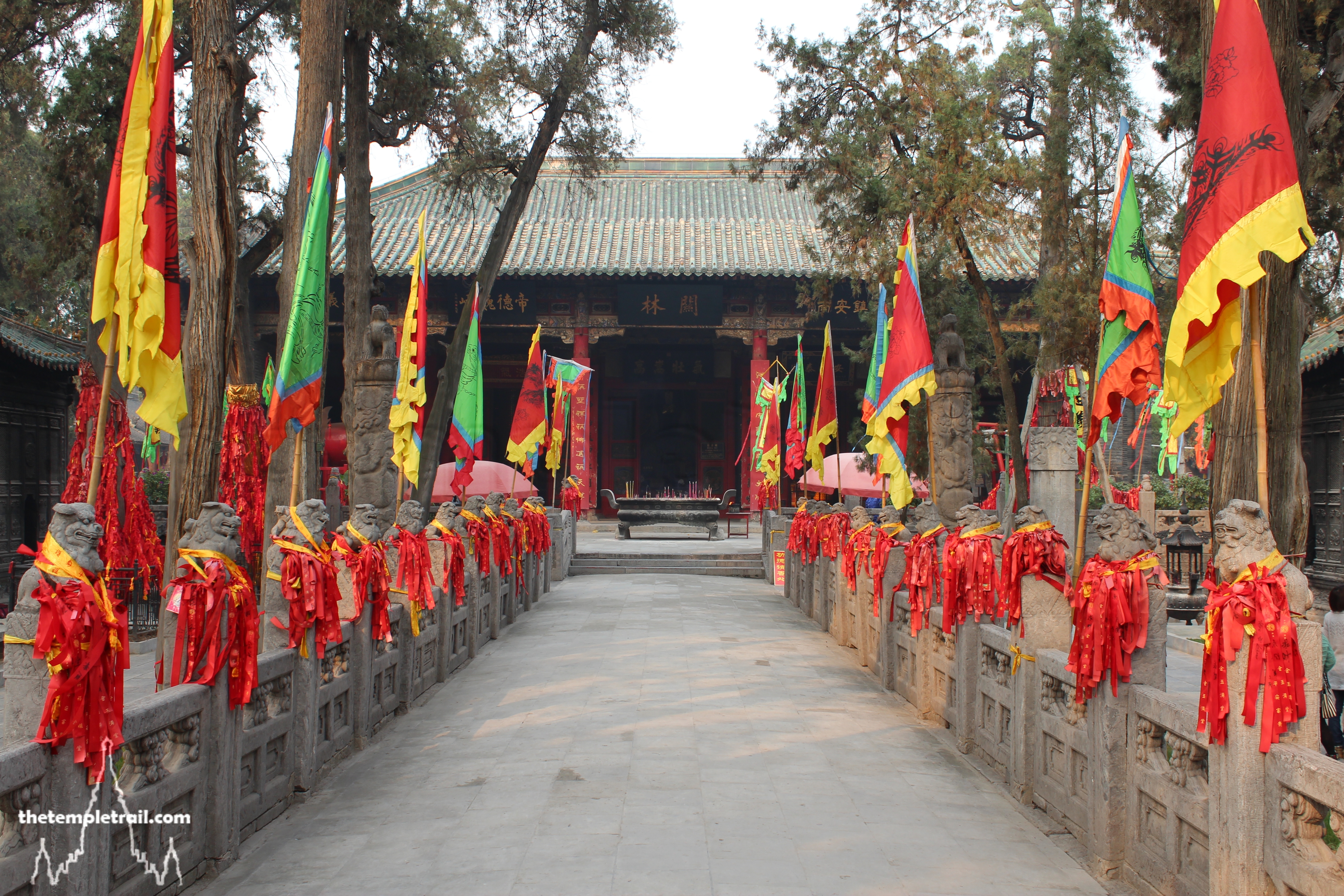 Guanlin Temple
Guanlin Temple
[…] Wat Muang / The Temple Trail […]